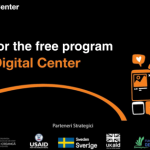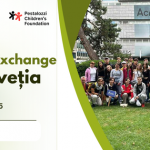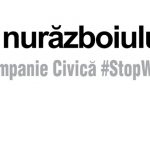April 8 – International Romani Day
April 08, 2021 – Every year, on April 8, International Romani Day is celebrated. This year marks the 50th anniversary of the first International Romani Congress, organized to celebrate Romani culture and raise public awareness of the challenges faced by Roma people worldwide.
A brief history of this important date for the Romani community is relevant.
The First International Romani Congress took place in London between April 7-12, 1971. This meeting—organized by the International Gypsy Committee, the World Council of Churches, and the Government of India—brought together Romani delegates from 21 states, including two countries from the former “socialist bloc”: Yugoslavia and Czechoslovakia.
Discussions during this historic meeting focused on five areas: social relations, education, culture, linguistics, and war crimes.
The main concept launched at the forum regarding the principle of “our Romani way” (amaro Romano drom) was formulated by the motto: “Our country is everywhere there are Roma, because Romanesthan (The Land of the Roma) is located in our hearts.”
The significant achievements of the First International Romani Congress were approved on April 8, 1971:
- The decision was made to drop the use of the ethnonym “Gypsy” (Greek: athinganous – intangible, untouchable) from international use, as it is often employed with a pejorative meaning. The official endonym established for international circulation was “Rom” (man); “Romni” (woman), and “Romano/Romani” (belonging to the Roma). Consequently, the International Gypsy Committee changed its name to the International Romani Committee (Komiteto Lumniako Romano).
- The Romani Flag was approved. It features two longitudinal bands, blue on the upper side and green on the lower side, with a red spoked wheel (chakra) placed in the center. The blue color symbolizes the Heaven-Father-God – freedom and purity, an unbounded space. The green color signifies the Earth-Mother – the places where Roma always wander, traditionally setting up temporary camps in forests and green fields. The red spoked wheel – the symbol of the eternal wandering of the Roma – is adopted from the flag of India, being similar to the Wheel of Absolute Time’s power (24 spokes = 24 hours), signifying the common oriental origin between the Romani community and the Motherland – India. The red color of the wheel signifies the vitality of the blood. Thus, the wheel together with the red color symbolizes the Road of Life of the Romani community. In the absence of the possibility to wander, Roma become hostages to poverty. The author of the International Romani Flag was the Indian philologist Weer Rajendra Rishi “Brahmarshi” (1917-2002), who participated in this historic meeting as a consultant for the High Commission of India, located in London.
- Following a rigorous selection, the International Romani Anthem – “Gelem, Gelem” (Romani language: “I wandered, I wandered”) – was chosen. The lyrics of the anthem were composed by a group of Roma detainees in a Nazi concentration camp, signifying the difficult wandering of the Roma on the endless paths of the world and their unfortunate fate, determined by the horrors inflicted on the Romani community during World War II. The musical arrangement of the official anthem of the Romani community was created by the French composer of Yugoslav origin Jarko Jovanovic. This melody became an international hit in Europe at the end of the 1960s after being performed by actress Olivera Vuco in the Yugoslav cinematic drama “I Even Met Happy Gypsies” (1967), directed by Alexander Petrovic.
Subsequent international congresses of the Romani community were also held on the European continent, focusing their joint efforts on various objectives to be achieved during the period between meetings. It is noteworthy that these international meetings addressed various current issues faced by the Romani community and proposed solutions, with the priority goal of reducing the degree of discrimination against Roma. At the same time, the main challenge that Romani leaders had to address was the dilemma related to: integration, inclusion versus assimilation. Contemporary industrial society, due to the globalization of technological and informational services, has advanced enormously in all aspects, including the social sphere, which clearly endangers the continuity of traditions preserved within the Romani community. That is why the Romani intelligentsia is concentrating all its efforts on promoting and preserving Romani culture, which has found a distinct place in the European cultural heritage.
The International Romani Day was marked for the first time in the Republic of Moldova on April 7-8, 2000. The festive activities during these days have become traditional and are held at the Nationalities House, the “Serghei Lunchevici” National Philharmonic, the “Ginta Latină” Culture and Art Center (currently “Teatrul fără Nume”), etc., with the active participation of representatives of the Romani community.




